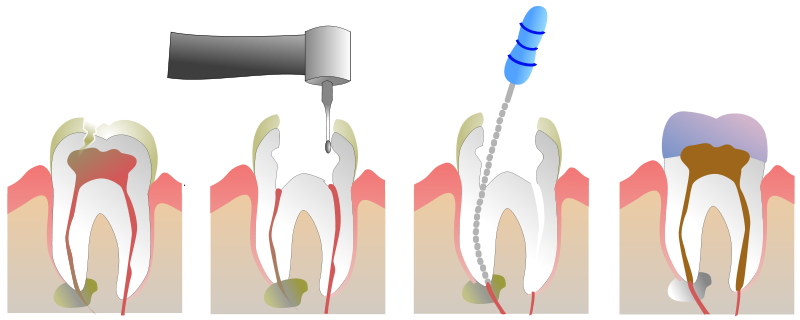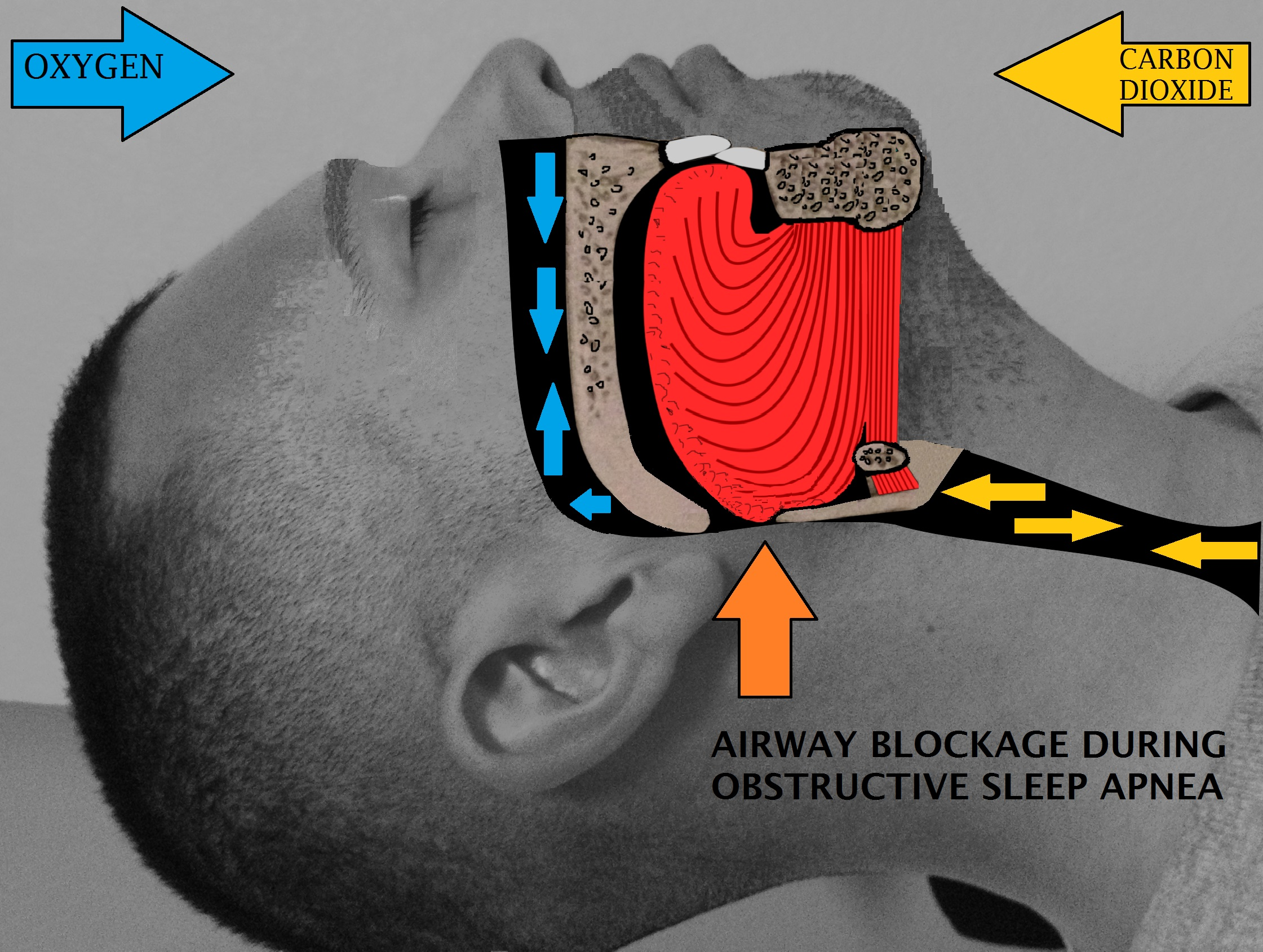(Illustration by Jeremy Kemp / GNU Free Documentation)
What is a Root Canal?
Inside every tooth is a soft material called pulp that contains nerves, blood vessels and connective tissue. When this pulp becomes infected, it can cause severe tooth pain. Root canal therapy is then needed to relieve the pain and save the tooth.
Why I May Need Root Canal Therapy?
The pulp can become infected or inflamed through trauma or a deep cavity. If the the pulp is damaged or dead, increased blood flow creates pressure inside the tooth that cannot be relieved. Typical symptoms are pain when chewing or hot and cold sensitivity when eating or drinking that lasts for more than a few seconds. This can worsen to spontaneous pain with acute pain that wakes you up at night. Without treatment, the infection may spread (which may be life threatening), the bone around the tooth may degenerate and an abscess can develop.
Signs you might need a root canal:
- Severe pain upon chewing or application of pressure to tooth
- Prolonged sensitivity to hot or cold temperatures
- Discoloration of the tooth
- Tender and swollen nearby gums
What is Root Canal Therapy?
Root canal therapy is a procedure that removes the damaged or dead pulp. This is done with local anesthesia so most root canals are done almost painlessly. It’s the pain leading up to the need for a root canal that most people associated with a root canal. Root canal therapy alleviates this pain. After the pulp chamber and root canal are cleaned out and reshaped, the canal is filled in with a rubber-like material called gutta percha to prevent reinfection and the tooth is permanently sealed. Treatment usually requires one to three appointments. After cleaning and reshaping, the dentist may seal the tooth with medication and a temporary filling or fill the canals depending on the tooth’s condition. Antibiotics may also be prescribed to fight further bacterial infection. If the tooth is still weak after the pulp chamber and canal are filled, a post may be used to reinforce the tooth. Finally, the tooth is permanently sealed and a ceramic crown is fitted over the tooth to strengthen it and prevent the tooth from fracture.
How Will I Feel After Treatment?
Tissue inflamation in the area may cause some discomfort and can be controlled with over the counter or prescription pain medication. Try to avoid chewing hard foods with the treated tooth until the crown can be placed and proper brushing and flossing are important.
Are There Any Potential Complications?
On rare occasions, new infections can occur. This may be caused by an undetected crack in the root of the treated tooth or a defective restoration allowing bacteria access to the root canal. In these instances, retreatment of the root canal or extracting the tooth may be necessary.
Are There Any Alternatives to Root Canal Therapy?
The only alternative to root canal therapy is to extract the infected tooth. An implant or bridge can be placed to replace the missing tooth. To learn more about these procedures and determine what’s the best option for you, give our office a call.
Myths About Root Canals and Root Canal Pain







